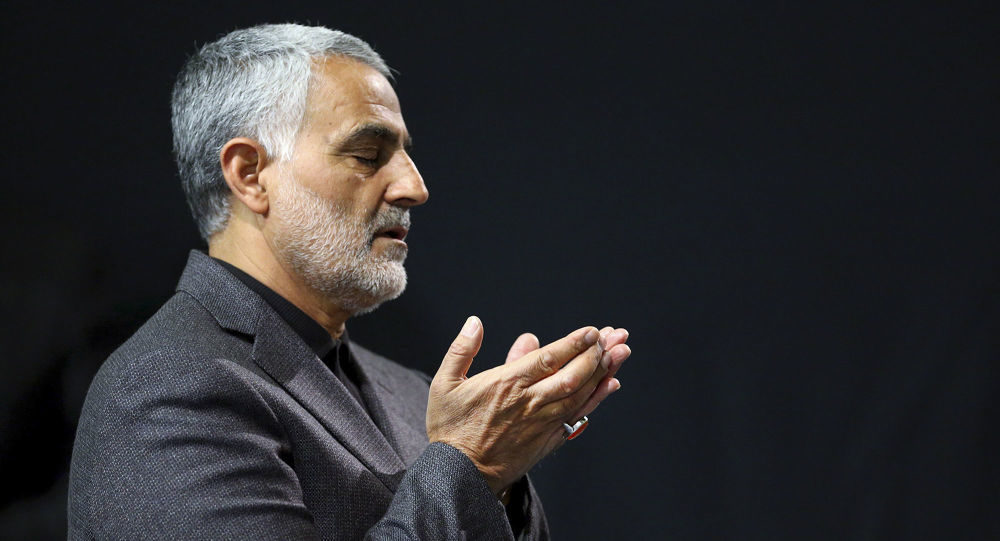
© AP
US President Donald Trump authorised the assassination of Revolutionary Guard Corps' Quds Force Commander Maj. Gen. Qasem Soleimani
despite conflicting information regarding the Iranian general's intentions, the
New York Times has
reported, citing the Pentagon and administration sources.
According to the sources, senior officials said that Trump chose to proceed with the assassination amid a 'new stream of intelligence',
the significance of which was debated inside the administration, about Soleimani's alleged plans to carry out "imminent" attacks on US diplomats and military forces stationed in Syria, Iraq and Lebanon.
One sceptical official cited conflicting intelligence which did not share these fears, pointing to 30 December expected to be "a normal Monday in the Middle East,"
with Soleimani's travels in the region expected to be "business as usual". The official cited communications between Soleimani and Iranian Supreme Leader Ayatollah Ali Khamenei, which
did not show any imminent plans for an attack as recently as a week before his killing.
Sources also said that while the option of killing Soleimani was listed among one of the possible 'responses' to Iran's alleged involvement in the December 27 rocket attack on a US military base in Kirkuk, Iraq,
some officials did not think he would pick what they considered 'the most extreme response'.
DoD and administration officials said that the president had initially authorised airstrikes against Kata'ib Hezbollah, the Baghdad-allied Shia militia group reportedly supported by Iran. These strikes took place, and over two dozen militia fighters were killed and dozens injured in US strikes on five facilities across Iraq and Syria. However, amid the violence that followed, including the attempt by angry Iraqi protesters to storm the US Embassy compound in Baghdad,
Trump reportedly changed his mind, and chose to proceed with killing Soleimani.The sources also said that that
Secretary of State Mike Pompeo and Vice President Mike Pence lobbied Trump to respond hawkishly to 'Iranian aggression', with the vice president's office helping to organise the meetings and conference calls ahead of the assassination.
The
NYT piece partially
corroborates a recent Bloomberg report citing sources which indicated that National Security Advisor Robert O'Brien, Secretary of State Mike Pompeo, Vice President Mike Pence and Acting Chief of Staff Mick Mulvaney had begun putting together the plot to assassinate Soleimani in the aftermath of the December 27 Kirkuk attack. One US official cited by the business newspaper indicated that the US military wasn't monitoring Soleimani directly on the night of the attack, but launched the strike on the basis of earlier-obtained information about his expected whereabouts at Baghdad International Airport en route to a third country -possibly Syria or Lebanon, on Friday morning.
On Saturday, sources told
The Washington Post that
senior US military officials were reportedly "stunned" by Trump's decision to kill Soleimani. Previous US policymakers did not allow themselves such a brazen response against such a senior member of the Iranian military.
Comment: It's worse than that.
Who
doesn't want de-escalation in the region? For the answer to that, look no further than that "shitty little country" on what used to be Palestine.
Then there's the official notification of the drone strike
provided by the Trump administration to Congress:
Pelosi cited the formal notification under the War Powers Act sent on Saturday by the Trump administration to Congress. According to US legislation, the notification has to be signed and sent to Congress within 48 hours of introducing American forces into armed conflict or into a situation that could lead to war.
US lawmakers are reportedly baffled that the notification they received was classified, detailing the intelligence that led to the strike on Suleimani, The New York Times reported, citing sources.
"The highly unusual decision to classify this document in its entirety compounds our many concerns, and suggests that the Congress and the American people are being left in the dark about our national security", Pelosi noted in a statement.
Democrats earlier slammed the assassination of Soleimani as illegal and unauthorized, warning that the move would reverberate throughout the increasingly volatile region.
Pompeo is on a
winning streak for total idiocy: "We think there is a real likelihood Iran will make a mistake and make a decision to go after some of our forces, military forces in Iraq or soldiers in northeast Syria," he told Fox News on Sunday. Someone tell the disgusting cretin that he punched first.

Comment: It's worse than that.
Who doesn't want de-escalation in the region? For the answer to that, look no further than that "shitty little country" on what used to be Palestine.
Then there's the official notification of the drone strike provided by the Trump administration to Congress: Pompeo is on a winning streak for total idiocy: "We think there is a real likelihood Iran will make a mistake and make a decision to go after some of our forces, military forces in Iraq or soldiers in northeast Syria," he told Fox News on Sunday. Someone tell the disgusting cretin that he punched first.